The Go programming language was developed by Google and released in 2009. Go is its official name, while Golang was chosen as the domain and name for ease of internet search.
Go was created as a universal programming language for backend development: parsers, multi-threaded applications etc. At the same time Go language is minimalist. Even inexperienced programmers can write reliable code with it. Simplicity and functionality attract specialists to Go and make it popular.
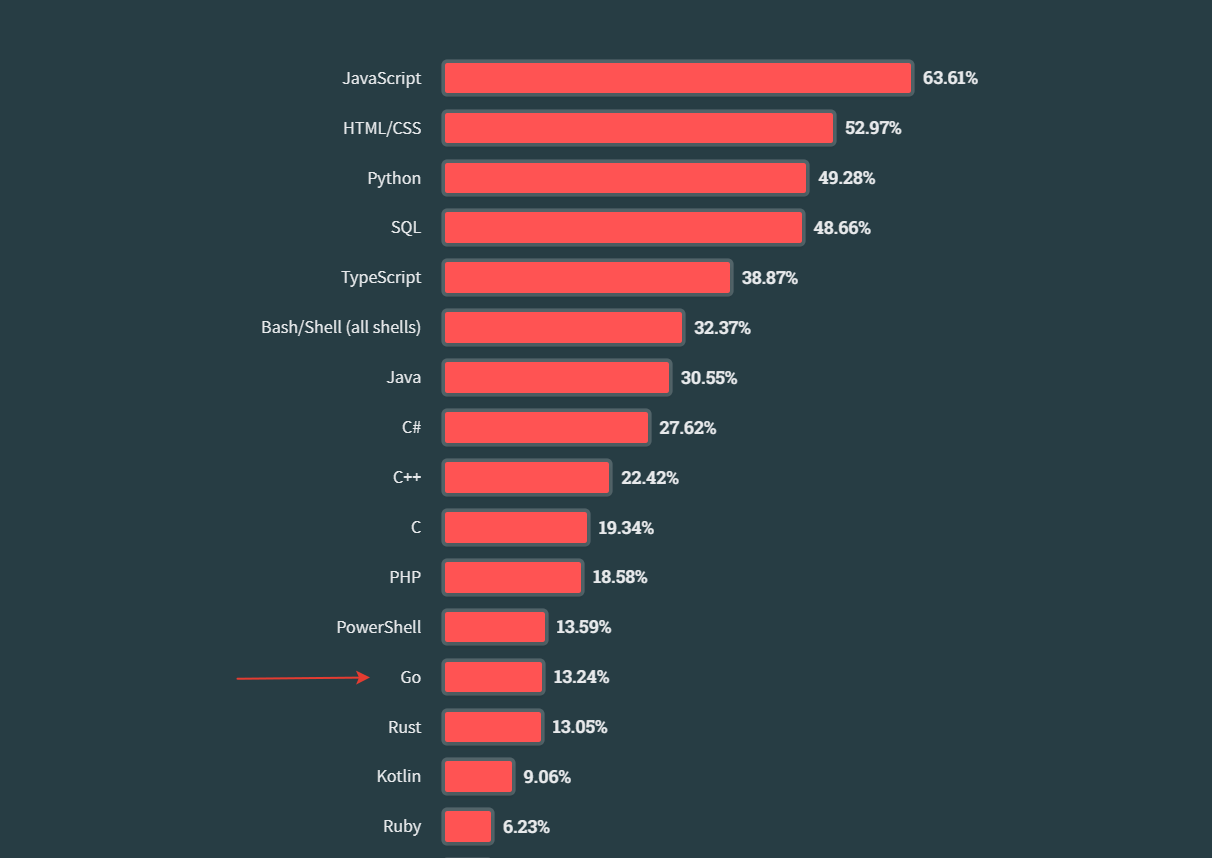
To speed up coding in Go, it is necessary to choose a good IDE. This makes coding more efficient in several ways:
- Tools like static analysis and code refactoring optimize code quality.
- Correctly formatting and highlighting code elements ease code readability.
- Collaboration is improved with version control systems.
- Productivity is increased by features like auto-complete, syntax highlighting, and debugging tools.
- Automation of repetitive tasks optimizes time.
- Customization gives flexibility.
In this article, we’ll explain how IDEs help to code faster and save time. Also, we’ll tell, which products are the best for working with the Go language.
Things to Consider When Choosing an IDE
For comfortable and high-quality development, it is important to choose the right IDE. Here’s the algorithm for selecting:
- Choosing IDE Type. Developers need to decide if they require a general-purpose IDE (for example, Visual Studio Code) or one specifically tailored for Go (for example, GoLand). If they work with multiple languages, a multilingual IDE might be better.
- Checking OS Compatibility. It’s important to ensure that the chosen IDE is compatible with the operating system that programmers use.
- Evaluating System Requirements. Some IDEs require significant computer resources. If the developers have weaker PCs, they should consider lightweight code editors with necessary extensions.
- Considering Functionality. Free IDEs offer enough for private projects, while paid ones offer broader functionality. For instance syntax highlighting, code refactoring and background compilation. Thus, for professional use, paid IDEs might be more suitable.
- Exploring Available Tools. Developers ought to explore the array of tools provided by various IDEs. Their selection should be driven by their specific requirements, including integrated Go tools such as go vet, gofmt, and golint. GitHub integration is also important. IDEs with built-in Git integration streamline the version control process, allowing developers to manage code repositories directly within the IDE.
- Testing on a Trial Project. Programmers should try out the chosen IDE with a small project. They need to evaluate how easy it is to use the tools, navigate the interface, and ensure all necessary functions work smoothly.
Also, take a look at our previous articles, in wich we discussed the best IDEs and text editors for React and for C++.
List of the Best Golang IDEs & Text Editors
Visual Studio Code
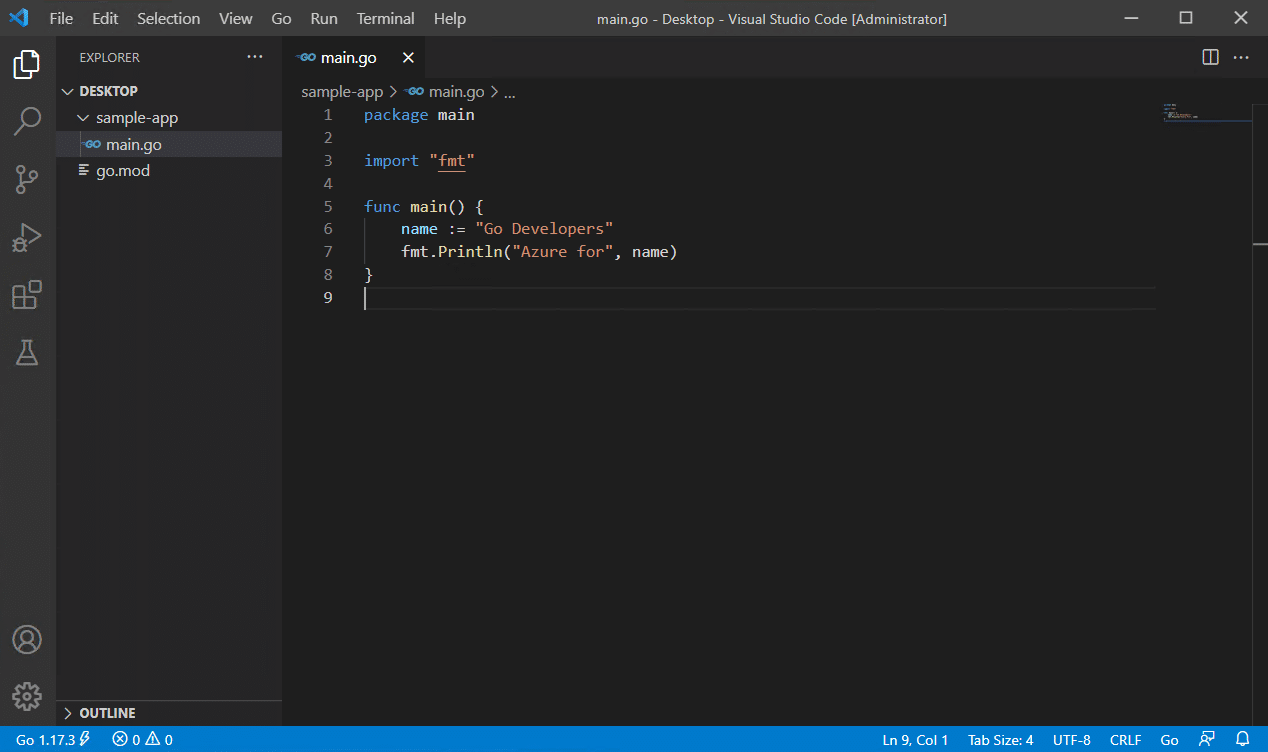
Cross-platform Golang IDE. It runs on Windows, macOS, and Linux, making it accessible across different platforms. With features like code highlighting, intelligent code completion, and robust debugging tools, VS Code empowers developers to write efficient, high-quality code.
Integration with Git facilitates efficient code management and version control. Its user-friendly interface and seamless performance make it a reliable choice for businesses aiming to optimize Golang development workflows.
GoLand
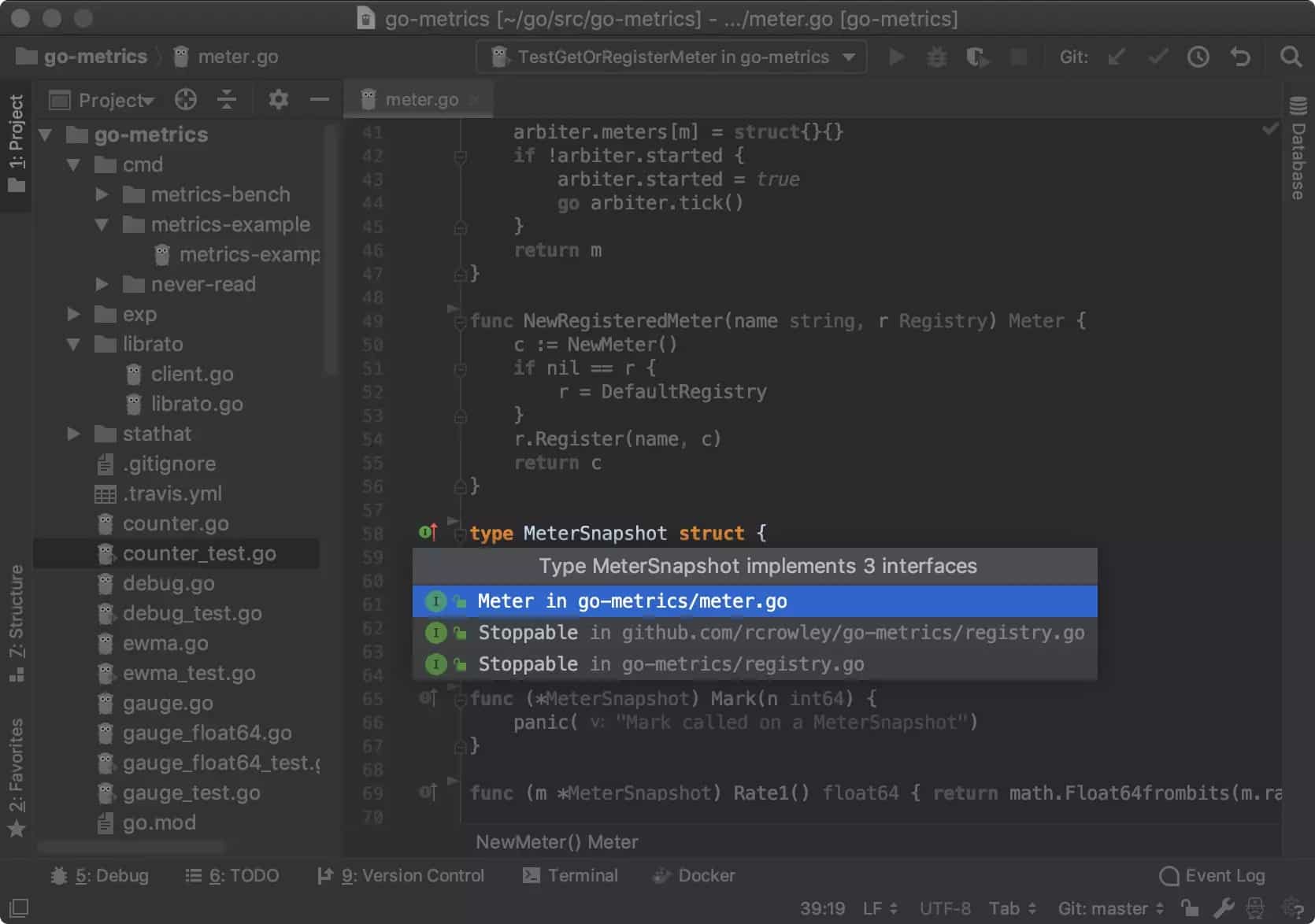
Cross-platform IDE built specially for Go developers. It offers comprehensive tools such as code analysis, smart code completion, debugging, and profiling. These functionalities not only streamline coding but also enhance productivity and ensure faster time-to-market for software products.
Furthermore, GoLand integrates with Git, simplifies code management and collaboration among development teams. Also this Golang IDE offers more than 50 plugins, so it can be integrated with various frameworks, tools and editor enhancements. GoLand stands as a versatile solution: it is suitable for a wide range of projects and development needs.
Sublime Text
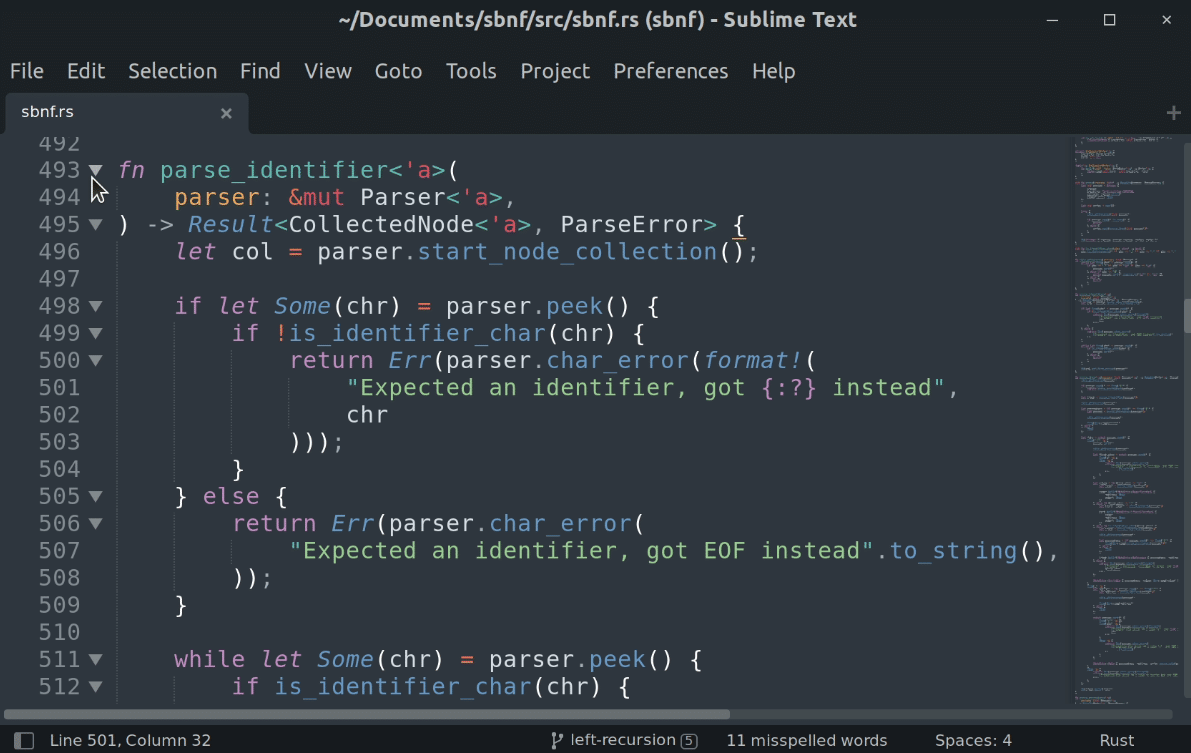
Sublime Text is a versatile editor that offers useful features for Golang developers. For instance it supports multiple languages like Python, Java, and C++, providing flexibility in development.
Plugins like GoSublime enhance functionality, streamlining the process. Customization options allow tailoring to specific project needs, boosting productivity. Thus, Sublime Text is an indispensable tool for a small development. For large project the function of this basic editor may not be sufficient. One of the reasons is that there is no built-in refactoring and debugging in this editor.
Vim
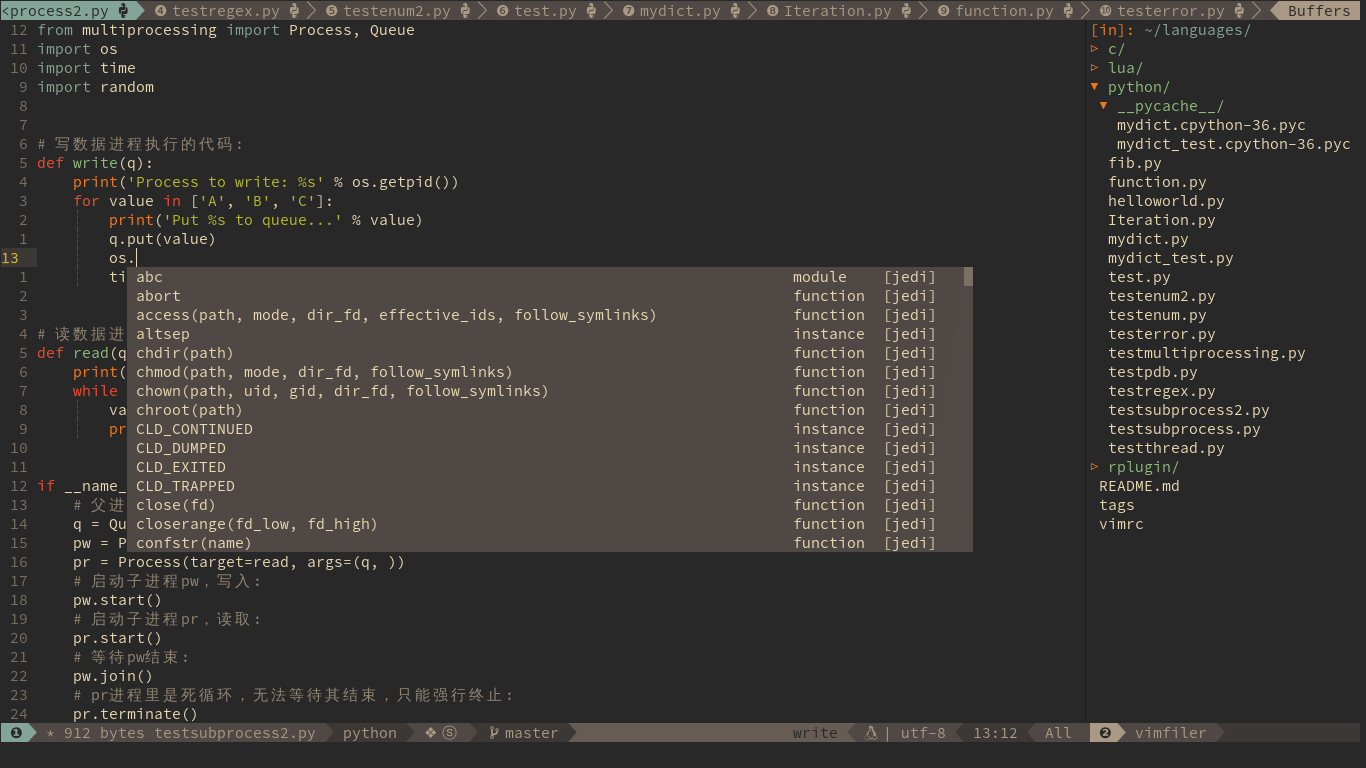
Versatile text editor that can be adapted for Go development using vim-go plugin. It offers fast code navigation, intelligent auto-completion, and powerful syntax highlighting for efficient code management. Seamless Git integration facilitates version control, ensuring codebase integrity and collaboration.
Vim’s extensive plugin ecosystem provides customization options tailored to project requirements. For example, users can install extensions for autocomplete code or syntax highlighting.
Since Vim is a universal editor, it will have to be specially adapted to work with Go: download the vim-go plugin, find suitable tools. But after a little preparation Vim empowers businesses with a robust development environment, enhancing productivity and project success.
AWS Cloud9
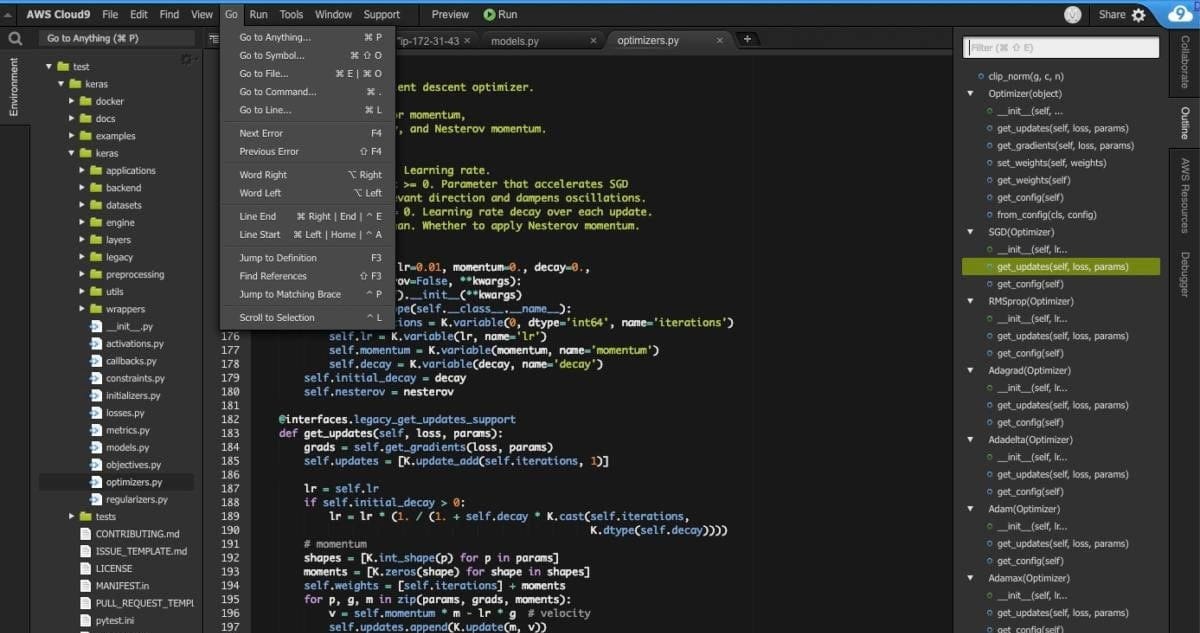
Cloud IDE provided by Amazon Web Services. It is designed for creating, deploying, and managing applications on Golang and other languages, such as JavaScript, Python, Java, and C++.
AWS Cloud9 includes many tools: code editor with autocomplete and syntax highlighting, debugging capabilities, and integration with other AWS services. For example:
- AWS CodeCommit — code repository for collaboration.
- AWS CodeBuild — automated code build and testing.
- AWS CodeDeploy — automated application deployment.
The main advantage of AWS Cloud9 for businesses — flexibility and scalability. Developers can easily access their projects from anywhere in the world and from any device. It is especially important for remote teams. Additionally, integration with other AWS services allows automating the development and delivery process, speeding up and simplifying the development cycle.
Conclusion
IDEs play a crucial role in streamlining the development process and improving productivity for Go developers. Each of the mentioned platforms offers unique features and capabilities tailored to different preferences and workflows.
Whether it’s the advanced code analysis of GoLand, the lightweight customization of VS Code, the flexibility of AWS Cloud9 and LiteIDE, or the simplicity of Sublime Text and Vim — there’s a tool for every developer’s needs.
By leveraging these Golang IDEs and text editors, developers can optimize their coding experience. It’s leading to more efficient and successful application development projects.
FAQs
What is the preferred Golang IDE?
For Golang development, developers have several options for editors and IDEs, each with its own set of features and advantages. Here are some popular choices:
- GoLand. GoLand is a full-featured IDE specifically designed for Go development. It offers powerful code analysis, debugging tools, version control integration, and more.
- Visual Studio Code (VS Code). A lightweight and highly customizable code editor. It offers excellent support for Golang development through various extensions.
- AWS Cloud9. A cloud-based IDE, suitable for Go development. It provides essential features like code editing, debugging, and collaboration tools in a cloud environment.
What editor to use for Golang?
Here are some popular text editors:
- Sublime Text. Code editor known for its speed and simplicity. Sublime Text can be enhanced with various plugins and packages for Golang development.
- Vim. A configurable text editor that is popular among experienced developers. Vim can be customized with plugins and configurations for Golang development.
Is Visual Studio Code good for Golang?
Yes, Visual Studio Code (VS Code) is a good choice for Golang development. It’s a lightweight and highly customizable code editor developed by Microsoft, and it offers extensive support for Go development through various extensions. Some of the key features include:
- Syntax Highlighting
- IntelliSense
- Code Formatting
- Debugging
- Linting
- Testing
- Integration with Go Tools
What is Golang best at?
Golang (Go) excels in several areas due to its design and features:
- Built-in features like goroutines and channels make it easy to develop concurrent applications, taking advantage of multiple cores. This is perfect for web servers and backend services. Go’s speed, efficient runtime, and built-in HTTP server support make building these systems a breeze.
- The standard library provides strong support for networking and distributed systems. This, along with its simplicity and performance, makes Go a favorite for network services like proxies, load balancers, and even distributed databases.
- Cloud-Native Development. Lightweight binaries, efficient memory management, and containerization support make Go ideal for building cloud-native applications. This is why projects like Kubernetes, Docker, and Terraform are written in Go — it’s perfect for creating scalable and resilient cloud software.
- Even system programming is within Go’s grasp. Low-level features like pointer arithmetic and memory management allow Go to be used for tasks like developing operating system components, device drivers, and other low-level software.
